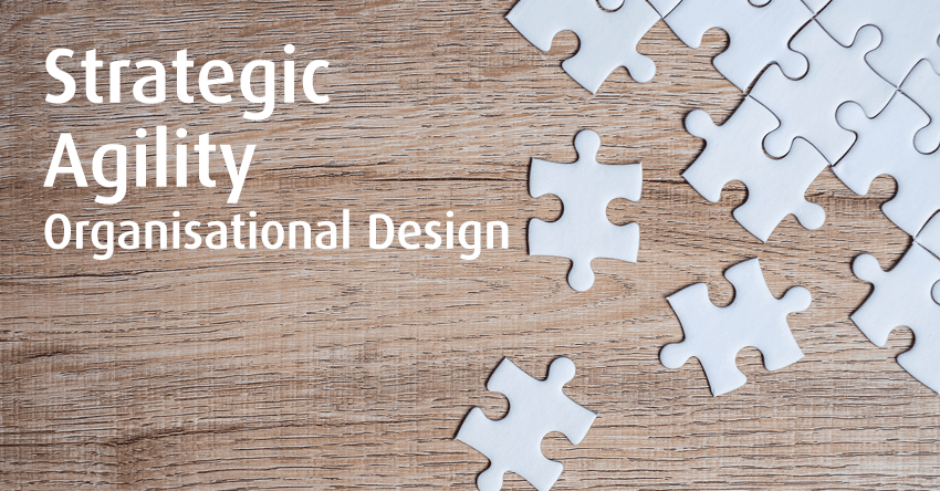As I have already mentioned in previous articles, there is a need to move away from hierarchical designs that foster conformity and therefore stifle engagement, innovation, creativity, organisational and individual development and, inevitably, ends up with the business failing to meet customer expectations and/or creates a problem with staff retention; both of which will be costly to the organisation itself. However, it would be very remiss of me if I tried to outline one design that would cover every organisation. As we all know, all organisations are different. Their Brands and Cultures will differ and therefore the way in which they are designed is likely to be different; taking in the needs of a particular organisation. I would only highlight the need to move away from designs that foster a ‘silo’ effect that would stifle collaboration and make communication difficult. Instead, I would like to look more closely at what organisations need to do to be more agile.
In my article ‘Strategic Agility – A Pathway to Growth’ I highlighted the need for an outward facing culture; idea generation through the encouragement of innovation and creativity throughout the organisation; a no blame culture (as long as valuable lessons are learned) and the need for agility throughout the organisation, through the reallocation of scarce resources (including talented people). But let’s look at this a little closer.
I am going to start with the reallocation of ‘talent’. This was partially covered in my article ‘Strategic Agility – Collaboration in the Internal and External Environment’. In agile organisations people can be moved around the company in order to ensure that deadlines are met. It might be that your company creates software and that one team is struggling with a problem that could see them miss a deadline for getting the software out to the customer; whilst another team may be some way off from the deadline that they need to meet. Collaboration across the two teams might help to resolve the problem? Well yes, but it would be more expedient if you already know that someone in the other team has the skills set to provide that assistance. Because of the way in which we advertise positions when we recruit people, applications for employment will often be tailored to a given post and, because of this, there is often a great deal of ‘tacit’ knowledge held within an organisation. The only way in which you will find out what knowledge is held across the organisation is by undertaking a skills audit. This may also aid innovation and creativity.
In my article ‘Strategic Agility – Leadership and Accountability’ I mentioned that Leaders need to anticipate (or even create) the unserved needs of the customer and to encourage innovation and creativity if the Organisation is to take the lead in the marketplace. However, to do this they need to give people the autonomy to make decisions that add value to the customer whilst not acting to the detriment of the organisation. This is not an easy balancing act. This will require a high degree of trust and mutual commitment across the organisation. This brings me on nicely to ‘support’ functions.
The days of relegating the likes of HR, Finance, IT, Sales, Marketing and Customer Support to the ‘back room’ are long gone when looking at agile organisations. These functions now act as Business Partners, providing valuable support to production teams, and so they too have to keep watch on the external and internal environments and make changes, in partnership with production teams, to ensure that organisational goals can be met. Everyone in the organisation is likely to find themselves face-to-face with the customer at some stage and therefore need to have a broad understanding of the business if they are to add value. With change in the external environment being a ‘constant’ there is a need for continuous development. But how does all this relate to organisational design?
When designing an organisation, whether it be from scratch or through a process of restructuring, you need to ensure that the Brand mirrors the promises made to the Customer and that the Culture mirrors the Brand. The Culture then needs to be linked to the Value Chain (working back from the Customer) and the inter-departmental interactions, that will facilitate collaboration and communication across the organisation, need to be mapped out in a way that can be easily followed by all members of staff. This is essential in ensuring that staff are engaged, that innovation and creativity is allowed to flourish, people can be held accountable for the outcome of the work that they undertake, staff are outward focussed (customer-centric) and that those in leadership roles are able to motivate their people in a way that aids productivity.
If you haven’t already, you can read Part 1, Part 2 and Part 3 of the series here.





